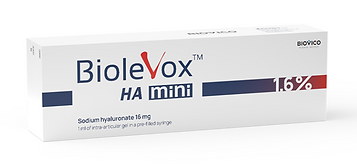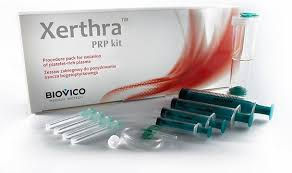
Wilandt Brothers
Biolevox™ HA

Biolevox HA ONE
AMIC® HA-based gel product contains 120 mg of sodium hyaluronate in 4.8 mL pre-filled syringe. A unique combination of optimally high molecular weight and high concentration of hyaluronate in Biolevox™ HA ONE creates a gel characterized with optimally high viscosity and elasticity1. Thus, Biolevox™ HA ONE stands as an ideal solution for a single shot viscosupplementation therapy as it provides a very high dose of optimally high molecular hyaluronate in single injection.
Biolevox 2.2mg
Intra-articular injectable hyaluronic acid with optimally high molecular weight and high content of sodium hyaluronate precisely tailored for a therapy based on three intra-articular injection.
Biolevox MINI
Injectable hyaluronic acid (HA) with high content of sodium hyaluronate of optimally high molecular weight, designed for an intra-articular injection treatment of small synovial joints.
Biolevox TENDON
Biolevox™ HA Tendon is hyaluronic acid (HA) gel especially designed for intratendinous or peritendinous injection as a double application therapy in order to alleviate the ongoing inflammation process and further recovery of the tendon functionality.
https://implai.com/professionals/products?category=3




Xerthra™ PRP Range
Xerthra™ PRP kit is a new generation, high-performance platelet (PLT) separation device, dedicated to preparation of platelet-rich plasma (PRP) from patient’s blood. Large number of growth factors released from PLTs delivered by PRP leads to improvement of regenerative properties of patient’s cells and tissues.
Xerthra™ kit consists of a highly efficient separation device, which due to its unique construction allows to separate and isolate the very high number of PLTs for the final injection. Thus, the final blood-derived product acquired with Xerthra™ PRP kit is characterized by PLTs concentration way above 1 000 000 PLT/µl which constitutes as a threshold of a therapeutical effectiveness for PRP. This is due to ability of Xerthra™ separation device to concentrate PLTs in up to 9.7 times more than in patients peripheral blood

